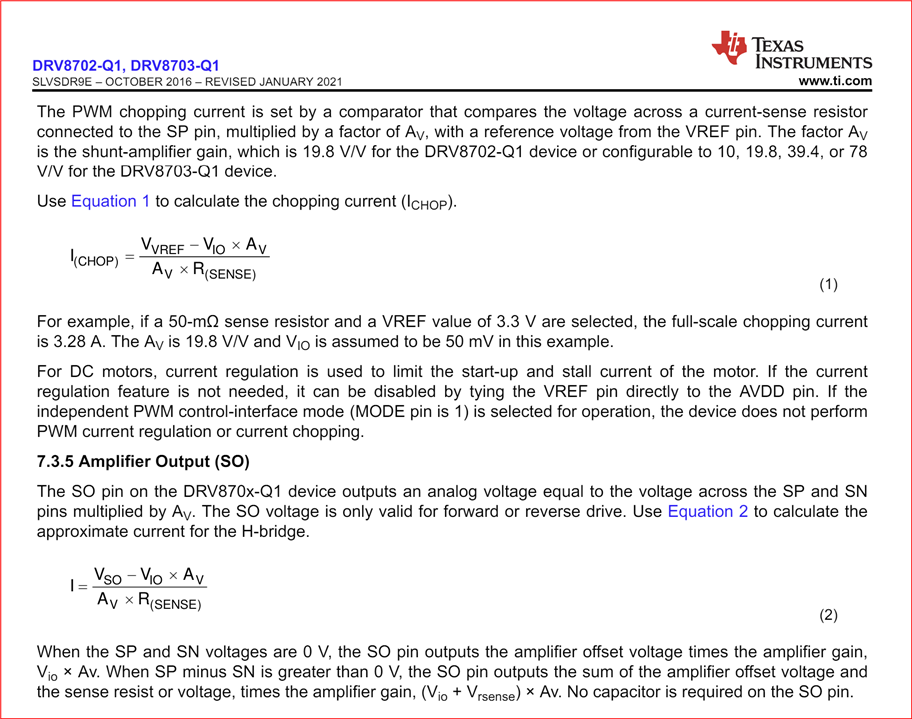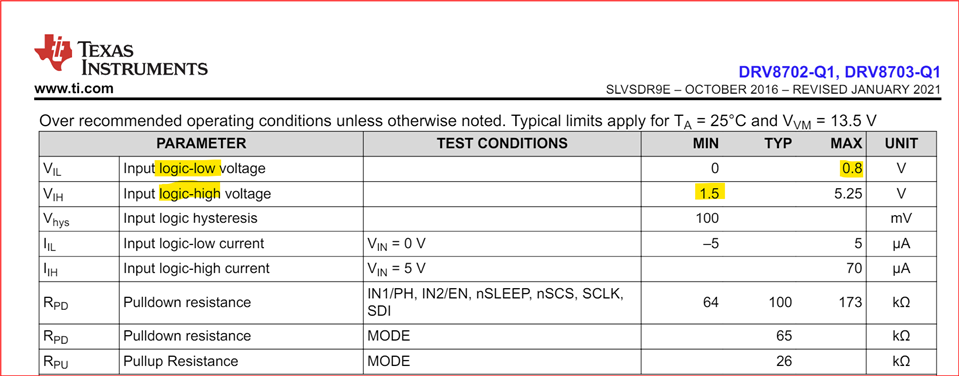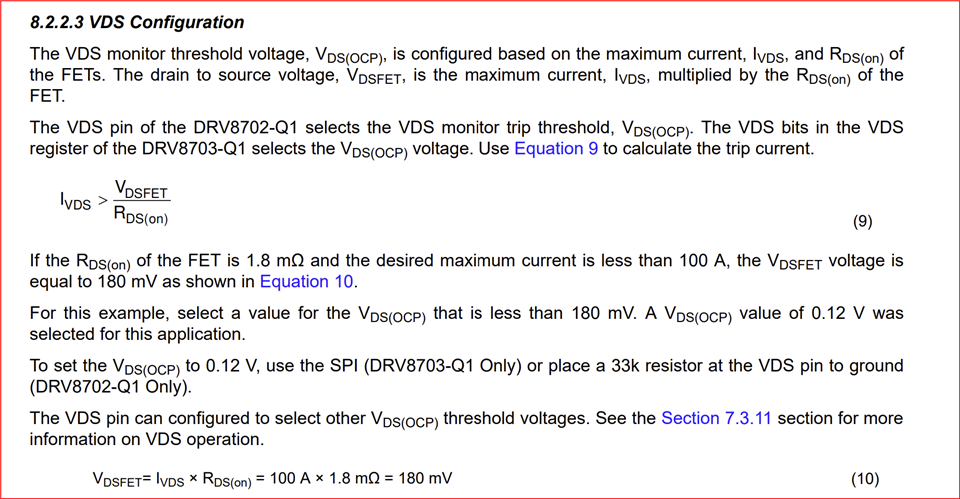Tool/software:
Hi Expert,
I am using drv8703 to drive the window lifter and I have a strange problem.

The image on the left shows the SO waveform during normal operation. The picture on the right is the SO waveform when the window is turned to the top.I want to know why the SO waveform of the motor is not a straight level when it is blocked.
Dc brush motor, operating voltage 12V.I want to know if you have any ideas.
BR,
Huan Yin




